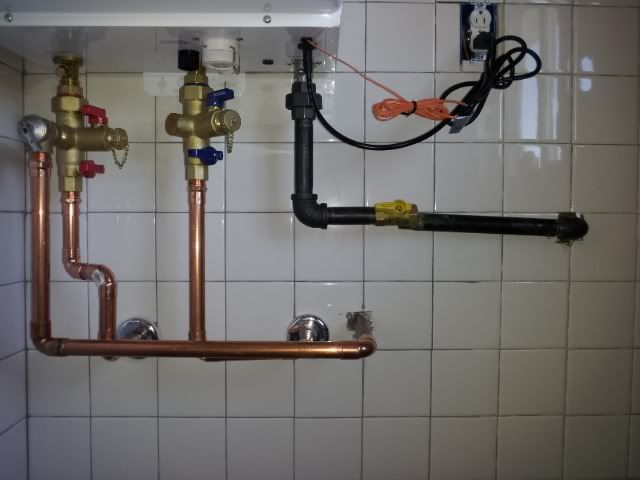luvmyaussy
Member
Hello all,
Am attempting to install a Navien NR210 water heater. Am using the Navien valve kit. Because of new home construction/installation I am very flexable with how to install.
Here is a picture of the current planned plumbing configuration. I figures since the valve kit uses union type connections I wouldn't need another union on the water lines. Because the copper water supply was so close to the bottom of the heater I decided to plumb direct.
Haven't soldered anything yet. Any ideas of suggestions will be greatly appreciated!
Respectfully,
Jeff

Am attempting to install a Navien NR210 water heater. Am using the Navien valve kit. Because of new home construction/installation I am very flexable with how to install.
Here is a picture of the current planned plumbing configuration. I figures since the valve kit uses union type connections I wouldn't need another union on the water lines. Because the copper water supply was so close to the bottom of the heater I decided to plumb direct.
Haven't soldered anything yet. Any ideas of suggestions will be greatly appreciated!
Respectfully,
Jeff


































![MEISTERFAKTUR drain snake 2.0 [50 FT] - with drill attachment - Ideal plumbing snake for sink and drain unblocking - Solid drain auger for real DYIs! (50 FT - 1/4 inch)](https://m.media-amazon.com/images/I/41VwmTiOsgL._SL500_.jpg)






















